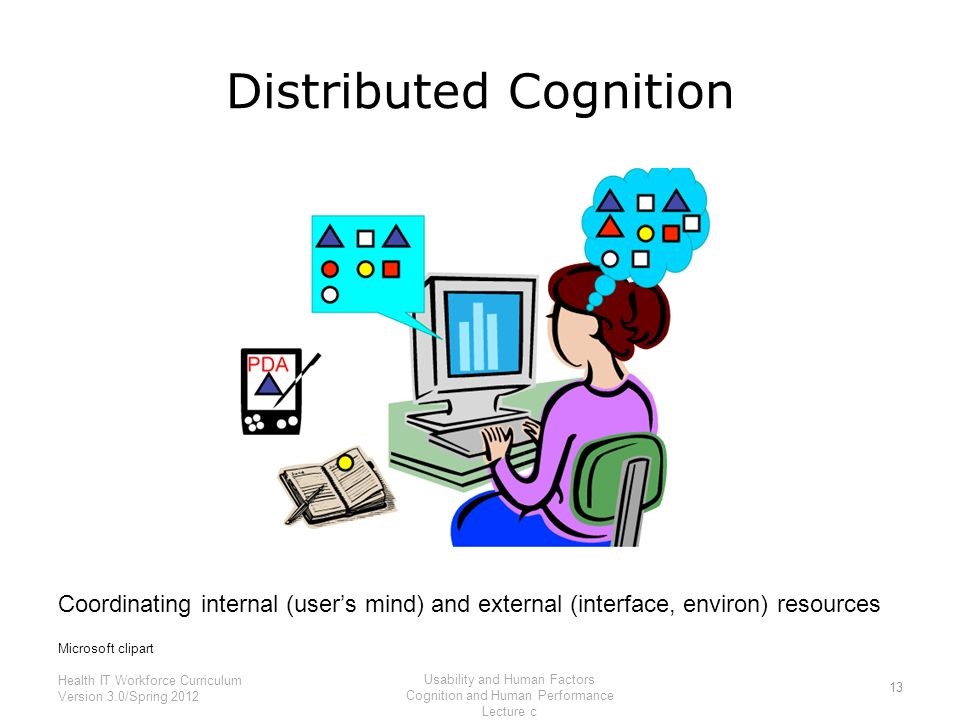Distributed Cognition
1. Distributed Cognition

Distributed Cognition[1]
Edwin Hutchins at the end of XX century created the psychological theory of distributed cognition. He used insights from psychology, sociology, cognitive science, and emphasized social aspects of cognition. It is a system (and not a method) that involves coordination individuals, artefacts and the environment. It has several basic components:
- Implementation of the information included in interactive representations
- Coordination of the involvement of agents
- Ecological contribution to the cognitive ecosystem
The theory expresses cognition as a process of information about the interaction with symbols in the world. It keeps track of all the phenomena responsible for this treatment as ecological elements of the cognitive ecosystem. Ecosystems are an environment in which ecological elements accumulate and interact with a particular cognitive process. Then cognition is formed by conveying information through expanded and embodying ways, representations formed by their interactions, and the close distribution of these representations to the cognitive purpose.
Distributed cognition is a field of cognitive science, which proposes that human knowledge and knowledge should not restrict the individual. Instead, it is distributed through the presentation of facts or knowledge, memories about individuals and tools, objects, in our environment. Distributed knowledge is a useful way to develop social aspects of cognition, emphasizing the individual and his environment. Distributed cognition views the system as a set of representations and simulates the exchange of information between these presentations. These representations can be present in both the participants' mental space and external imagery in the environment.
This abstraction can be divided into three different process types.
- Cognitive processes can be distributed among members of a social group.
- Cognitive processes can be distributed in the sense that the functioning of the
cognitive system involves the coordination of the internal and external
(material or environmental) structure.
- Processes can be distributed over time in such a way that products from past events can change the nature of the associated events.
Edwin Hutchins, distributed cognition theory claims that knowledge is not only pure individual, but also in the individual's social and physical environment.
The theory's dependence on the individual's social and physical environment is very useful in analyzing educational technologies and human-computer interaction.